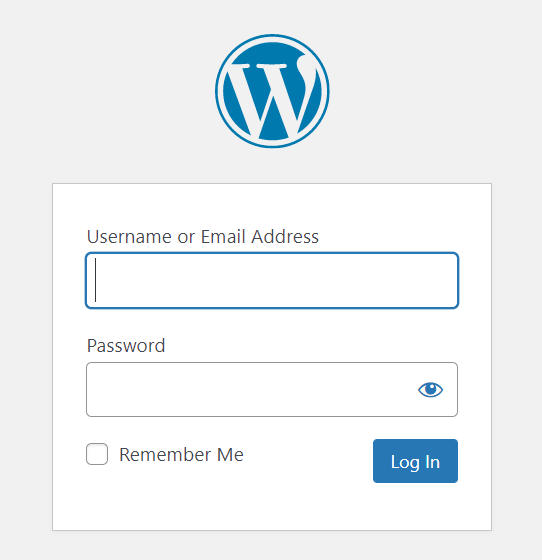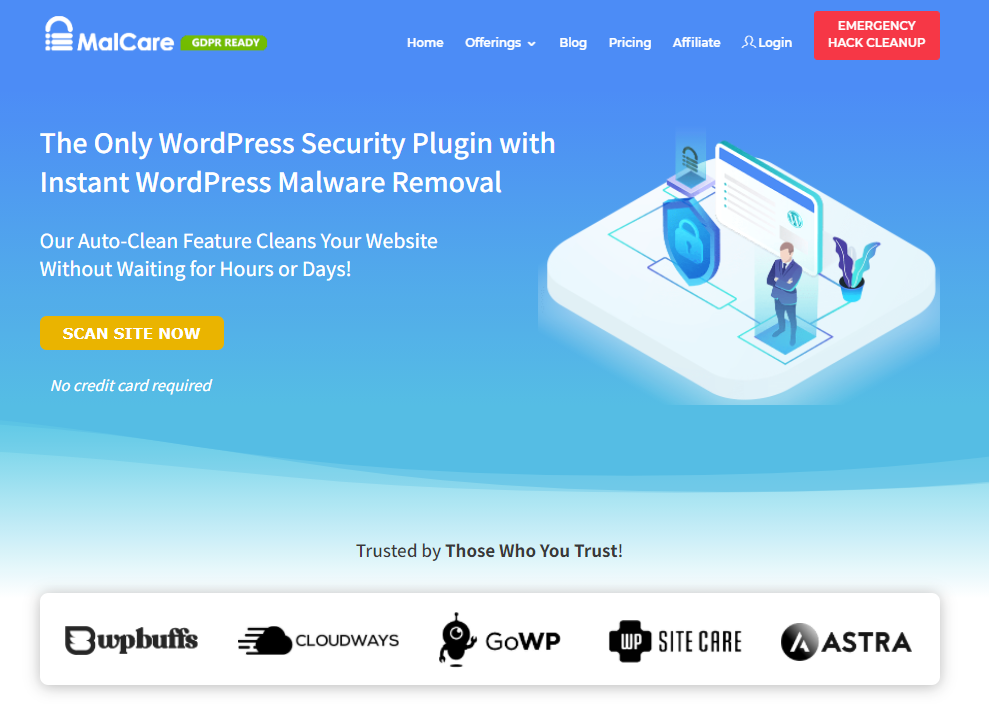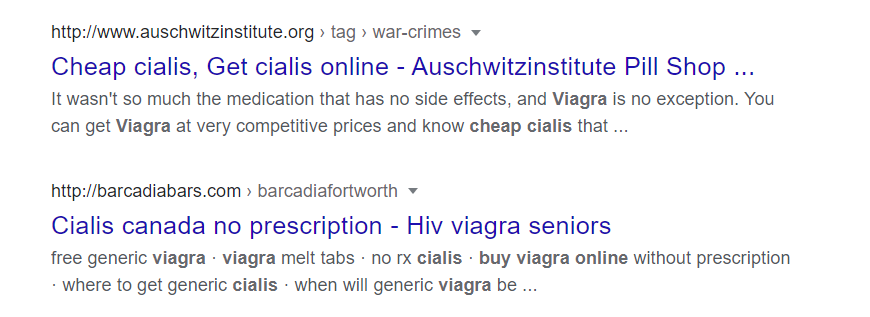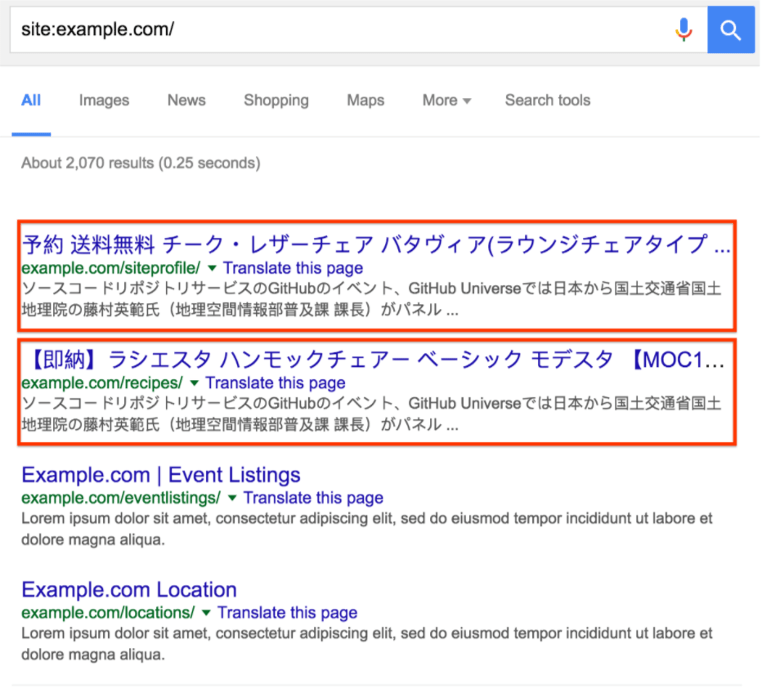Thousands of websites find themselves targeted by hackers or cybercriminals each day. If you dig deeper, you’ll find that WordPress websites make up a huge chunk of these compromised sites. While the most obvious reason for the attacks on WordPress sites is simply the high market share of WordPress, there are a few other reasons too.
Before we dive into the ways of securing WordPress sites, it’s important to get something out of the way first.
Is WordPress secure?
The growing number of cyberattacks on WordPress sites naturally begs this question: Is WordPress secure? WordPress is secure. But here’s the catch: That does not mean that all WordPress sites are secure. Here’s why:
A WordPress website comprises of the following two components:
- The Core WordPress version (released by the WordPress team of developers)
- Additional components like the added plugins/themes, the web hosting layer, and registered users
While the Core WordPress is always kept secure through timely security fixes and patches, the same cannot be said about all WordPress plugins and themes. There’s another reason why WordPress websites get a bad rap. Most website owners fail to comply with recommended WordPress security measures, thus making their sites vulnerable to hackers.
How to secure a WordPress site
If you want to know how to secure a WordPress site, this WordPress security guide is the right place to start. Let us get started with a look at the six essential steps for securing a WordPress site:
1. Use secure hosting
The first step is to host your website on a safe and secure web hosting platform even if that comes at a higher cost. This investment will pay off given that quality hosting companies like Bluehost or Siteguard implement best practices to safeguard your website and also optimize it for good loading speed.
2. Keep your site updated at all times
Among the most recommended WordPress security best practices, this step ensures that the WordPress core and all the plugins, and themes on your site are always updated to the latest version.
Applying regular updates can be challenging if you manage hundreds of websites each with many plugins and themes. In this case, we recommend using a WordPress management tool like WPManage.
3. Regularly back up your website
Though not strictly a security measure, make regular backups of your site a part of your website maintenance plan. Having the latest backup when your site gets hacked is the only way to avoid downtime and get back to business.
You should regularly take a backup every week, day, or even hour (depending on how fast your website data changes). You can choose from reliable backup plugins like BlogVault or BackupBuddy that offer automated, scheduled, and on-demand backups.
4. Add an SSL certificate
Short for Secure Sockets Layer, adding an SSL certificate to your website makes it an HTTPS-enabled website. What does this mean for your site’s safety? HTTPS ensures that all the data exchanged between your users and your web server is encrypted. Even if hackers manage to intercept this communication, they will be unable to use it. Search engines like Google favor HTTPS sites over HTTP ones to ensure the safety of their users and place HTTPS sites higher on their results pages.

You can obtain an SSL certificate either from your web hosting company or through a third-party SSL plugin like Let’s Encrypt.
5. Secure your WordPress login page
You cannot even think about WordPress website security without taking care of your login page. This is because hackers regularly target login pages using brute force attacks. These attacks deploy automated bots to guess the usernames and passwords of WordPress accounts to gain access to them.

Here is how you can secure your WordPress login page:
- Configure strong 12-character long passwords that include numbers, special characters, as well as upper-case and lower-case alphabets.
- Restrict the number of failed login attempts on your user account.
- Use 2-factor authentication or 2FA to authenticate every user sign-on.
6. Use a WordPress security plugin
The most effective way to improve the security of your WordPress site is to use a WordPress security plugin. These plugins are specifically developed to detect and protect against the latest WordPress hacks, and are the best way to keep up with the latest methods that hackers unleash on websites.
You can choose from a variety of free and paid security plugins – although we would always recommend a paid plugin like MalCare or Sucuri for the comprehensive features they provide, such as:
- Malware scanning and removal
- Firewall protection
- Protection against brute force attacks
- Website hardening measures
- Automatic security updates

While these six measures can greatly improve the security of your WordPress site, another approach to consider is implementing a Virtual Private Network (VPN). One form that is particularly efficient at ensuring data integrity and confidentiality is the IPsec VPN. If you want to know more about this and how it compares to SSL VPNs, you can check this detailed analysis on IPsec and SSL VPNs compared. This can add an extra layer of protection for your website, keeping your data secure from potential cyber threats. In the next section, we share the top six vulnerabilities that pose a challenge to the security of WordPress sites.
What can vulnerabilities in a WordPress Site can lead to?
Here is a look at the six ways in which hackers exploit and attack vulnerable WordPress websites:
1. SQL Injection
If you are familiar with how databases work, you can guess what an SQL injection does. With this attack, hackers inject malicious code into databases through an SQL query. Once this code enters the WordPress database, it can perform multiple tasks like stealing your database records, modifying your data, or performing administrative tasks without authorization.
2. Cross-site Scripting (XSS)
Through XSS attacks, hackers take advantage of any vulnerabilities in your installed plugins or themes. These vulnerabilities allow foreign JavaScript code to be run on your website. These attacks are trickier to catch because there are simply too many types to consider. But for the sake of clarity, these can be viewed in two categories:
- One where the malicious script is executed on the browser on the client-side
- The other is where the malicious scripts are stored and executed on the server, and then served by the browser
After taking control of a vulnerable website, XSS returns malicious JavaScript code to its visitors. Hackers can use an XSS attack to steal data or manipulate how your site looks and behaves.
3. Phishing
Phishing is the practice that hackers use to send fraudulent emails that appear to originate from genuine sources to unsuspecting users. A phishing attack aims to steal sensitive information like login credentials or credit card numbers though it can lead to more sophisticated forms of attacks like ransomware or advanced persistent threats.

4. Privilege Escalation
Privilege escalation is a form of cyberattack where a hacker gains illegal entry into a user account and then obtains the elevated privileges of a user with administrator rights. These types of attacks are damaging as hackers with elevated privileges can inflict damage in several ways including stealing user credentials, installing and executing malware code, and deleting access logs.
5. Pharma hack
Imagine a high-ranking and trusted website selling illegitimate pharma products. That is what a pharma hack does. Pharma hacks are a form of SEO spam attack where search engines can list your website for search keywords like “buy viagra.”

Once “unsuspecting” users click your website link on the search results, they are redirected towards unsolicited websites selling fake pharmaceutical products.
6. Japanese keyword hack
This type of attack is similar to the Pharma hack where hackers can exploit your website’s high SEO rank to infiltrate it with spammy keywords in the Japanese language. Like pharma hacks, users searching using Japanese keywords are redirected to fake and unsolicited websites selling counterfeit products. The pharma and Japanese keyword hack can cause loss of customer trust in your brand and the risk of Google blacklisting your site or your web host suspending it.

example
The above list comprising just six of the many forms of attacks that hackers can inflict on your website makes a strong case for why you should protect your WordPress site from hackers.
The role of WordPress security
A successful hack can seriously cripple your website for days, if not weeks. Depending on the type of attack, your WordPress website could suffer repercussions such as:
- Loss of sensitive data like customer records
- Complete defacement of your home page thanks to pop-up ads
- Suspension or blacklisting by Google or your web host
- Loss of brand trust and customer loyalty
- Massive reduction of web traffic leading to lower sales and revenues
Despite all the best security measures in place, there is no guarantee that hackers will not target your website in the future. This is what makes WordPress security a continuous process, and not just a one-time affair. There is no 100% immunity from hackers as they keep innovating and creating new ways of compromising websites.
Of the 6 steps mentioned in this guide, investing in a WordPress security plugin like MalCare that offers multiple security benefits such as malware removal, inbuilt firewall, login protection, etc. is the best way to secure your WordPress site and prevent future attacks. What do you think is most important to keep WordPress websites safe from hackers? Are there any measures you swear by?
This is a post, created in collaboration with Akshat Choudhary, who is the CEO of BlogVault.
